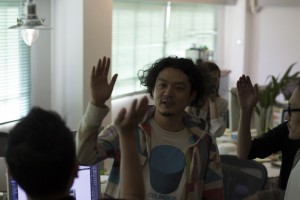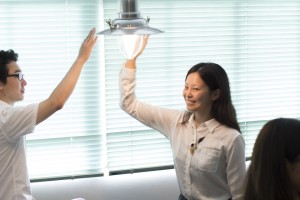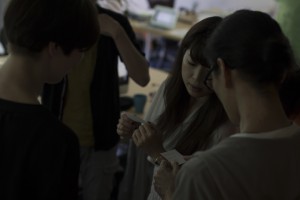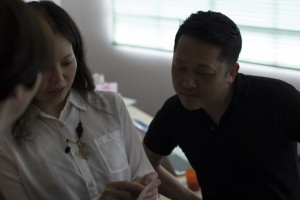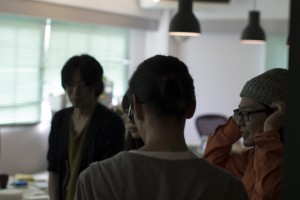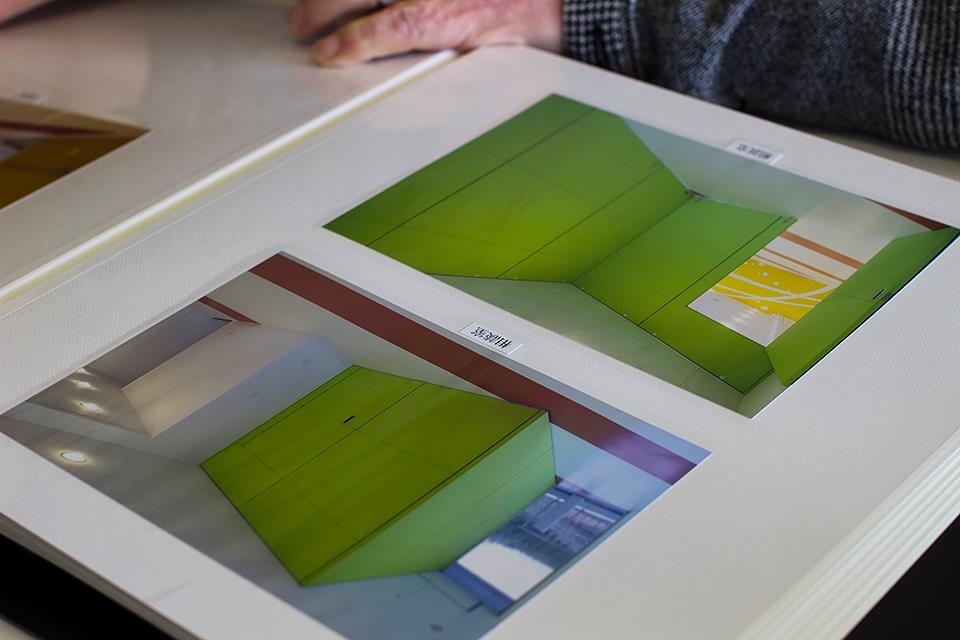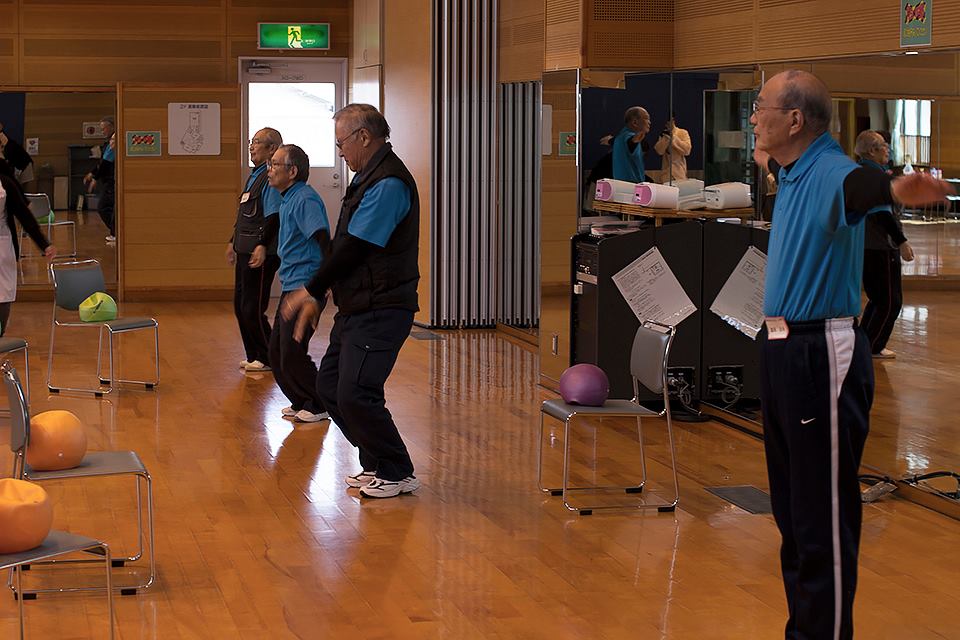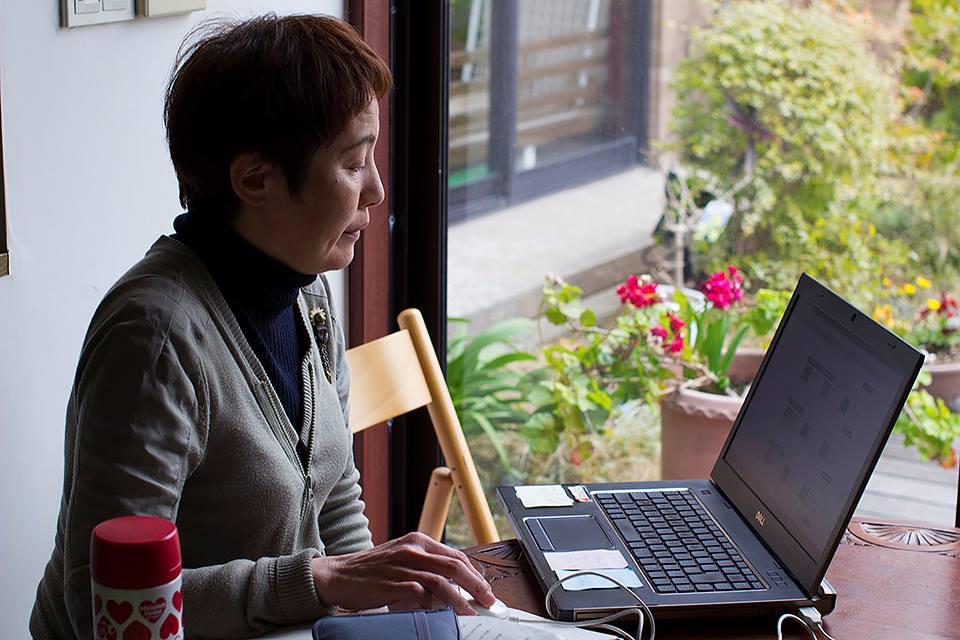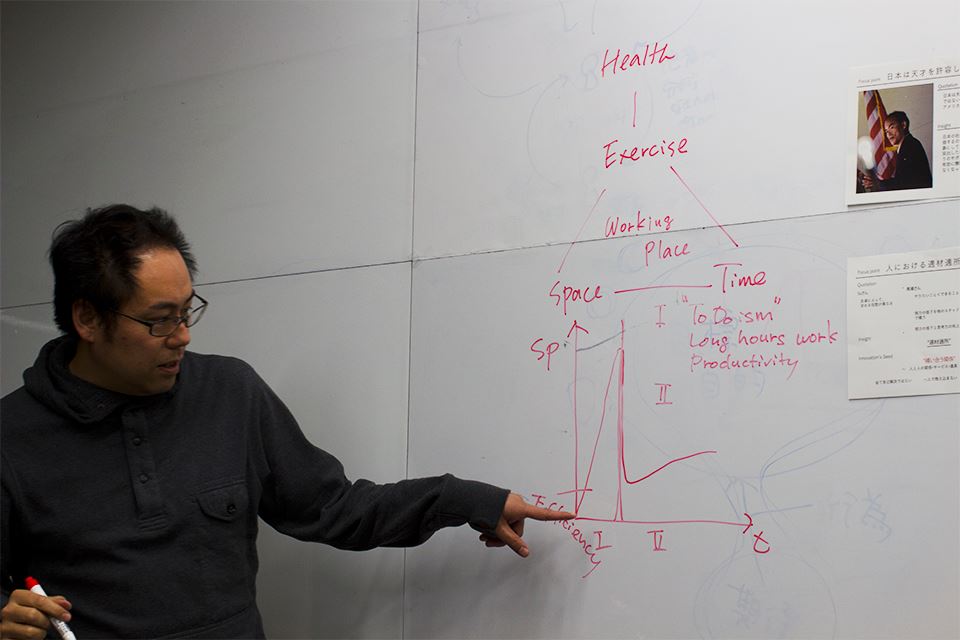Our first user-test
We conducted our first small user-test at the office where we work part-time, Bulanco. We used this test mainly to observe the effect of different social actions on office atmosphere, and what the employees thought of these social actions.
During our test we used two social actions: the high-five and discussing personal interests. We chose the high-five as it came up during the expert interview with professor Hirai, where he discussed its successful implementation in a Japanese company. It being a rather informal act with skin contact makes it an unusual social act in the Japanese workspace, and one that can change the interaction patterns. Discussing personal interests was a social action we came up with after reading ‘The Best Place to Work’ by Ron Friedman. In chapter 5 he explains that sharing personal information and discovering shared interests can increase bonding between people.
We started out encouraging everyone to give high-fives, and after that we placed them in couples and gave them questions to talk about with each other. After these tests they were asked to fill out a questionnaire, and we had an informal discussion about what they thought of the test and the prototype we have in mind.
During the high-fives we saw everyone loosen up a bit, and the atmosphere becoming more relaxed. People started to laugh and smile more. This also came out of the results of the questionnaire, which showed that they enjoyed doing the high-fives, and felt happier and more relaxed afterwards. As sharing the personal information was done immediately after the high-fives it’s hard to say whether they changed the atmosphere a lot, but the results from the questionnaire indicated that the participants favoured performing the high-fives as something easy and fun to do. However, we also observed the effect of hierarchy here, as the new employee was much more hesitant to high-five others than the other employees, and was also less open while conversing. Hopefully performing these social actions over time will lessen this.
All in all the feedback on the test was positive and gave us more confidence about our concept. We also received valuable feedback on when to schedule the behaviours, as they told us that especially during the morning and the evening there is little communication, and a more ‘tired’ mood in the office. One of the participants also mentioned she would really enjoy to exercise more, and asked whether we might be able to incorporate it in our concept. These are all findings we will definitely take into account when developing our prototype further.








